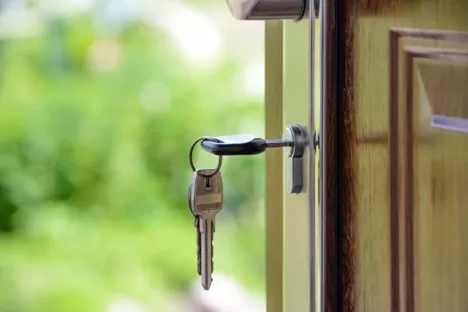Real estate can be a lucrative source of income for beginners and experienced investors alike. From rental properties to house flipping, there are various ways to make money in real estate.

According to a survey conducted by Bankrate, more than 30% of Americans consider real estate the best way to invest money they wouldn’t need for at least a decade. With the potential for high returns, it’s no wonder many people are looking to start real estate investing.
However, it’s essential to thoroughly understand the different concepts involved in real estate, including subletting and subleasing. Subletting and subleasing are two standard practices in the real estate industry that can help maximize the profits of property owners.
While they might seem similar, they have different legal implications and can impact the landlord-tenant relationship in different ways.
By understanding the pros and cons of each practice, beginners can make informed decisions on how to utilize their properties best to generate income. Below, we will provide a beginner’s guide to making money in real estate, focusing on subletting vs. subleasing differences.
Let’s get on with it:
Subletting
Before we establish Subletting Vs. Subleasing Differences, let’s understand each separately. Subletting is the act of a tenant renting out all or part of their leased property to another tenant, known as a subtenant.
The original tenant assumes the role of a sublandlord and is responsible for ensuring that the subtenant pays rent and behaves appropriately while occupying the property.
Read Also:
Subletting offers several advantages, such as allowing the original tenant to earn additional income from their leased property. It can also provide flexibility to the subtenant, who may seek a shorter-term rental agreement than the original lease allows.
However, it is essential to consider potential drawbacks to subletting as well. For instance, the subtenant may not take the same level of care with the property as the original tenant, potentially damaging the property.
Additionally, subletting may not be permitted under the terms of the original lease, exposing the sublandlord to potential legal consequences.
It is crucial to carefully review the lease agreement before engaging in subletting, as it may contain clauses prohibiting or limiting it. Sometimes, the landlord may need to provide approval before a tenant can sublet the property.
Furthermore, the original tenant and the subtenant must establish a clear and comprehensive agreement outlining their respective obligations and expectations.
Subleasing
Subleasing refers to a tenant renting out all or part of their leased property to another tenant, known as a sublessee. Unlike subletting, in a sublease, the original tenant remains responsible for paying rent to the landlord and is considered the primary tenant, while the sublessee becomes a secondary tenant.
One of the primary advantages of subleasing is that it allows the original tenant to earn income from their leased property while still retaining control over the property and the primary lease.
However, there are also potential disadvantages to subleasing. For example, the original tenant may have difficulty finding a suitable sublessee willing to pay the required rent.
Additionally, the original tenant remains responsible for any damages caused by the sublessee, which can result in financial liability.
From a legal perspective, the original tenant must obtain written permission from the landlord before engaging in subleasing, as it may be prohibited or restricted under the terms of the original lease agreement.
The sublease agreement should also be carefully reviewed and drafted to ensure it complies with all applicable laws and regulations.
It’s important to note that the original tenant remains ultimately responsible for any violations of the primary lease, even if the sublessee commits them. Therefore, screening potential sublessees carefully and establishing clear expectations and obligations in the sublease agreement is crucial.
Making Money Through Subletting and Subleasing
Subletting and subleasing are both practices that can provide property owners with an additional source of income. By renting out a property or a portion of a property to another tenant, property owners can earn rental income while potentially reducing their rental costs.
Subletting can be a desirable option for property owners who need to temporarily vacate their property for some time, such as for work or travel. By subletting their property, the original tenant can generate income and avoid paying rent for a property they are not using.
Subleasing, on the other hand, can be a more long-term strategy for generating rental income. By leasing a property to a sublessee, the original tenant can become a landlord in their own right and generate regular rental income from the sublessee.
For example, a college student who is going home for the summer but has a lease that runs through the summer months may choose to sublet their apartment to another student. This way, they can earn rental income and avoid paying for an apartment they are not using.
Another example of subletting can be a small business owner who has excess office space may choose to sublet the space to another business or individual to generate additional rental income. It can be a cost-effective way to offset the cost of the rental space and may provide an opportunity to network and collaborate with other businesses.
For subleasing, for instance, a homeowner moving out of state may choose to sublease their home to a tenant, allowing them to earn rental income and potentially cover the mortgage payments on the property.
Similarly, a tenant who has leased an apartment but has to relocate for work may choose to sublease the apartment to another tenant, allowing them to earn rental income and potentially avoid breaking their lease agreement.
Conclusion
Real estate can be profitable for those looking to generate additional income. Subletting and subleasing are two practices that can help property owners maximize their profits by renting out all or part of their leased property to another tenant.
Although both subletting and subleasing offer advantages, property owners must understand each practice’s legal implications and potential drawbacks before engaging in them.
Property owners can successfully generate rental income and potentially reduce their own rental costs by carefully reviewing their lease agreements, obtaining written permission from landlords, and establishing clear expectations and obligations in subletting and subleasing agreements.









